Potemkin Stairs
Potemkin Stairs is a boulevard “cascade” of Odessa, which gained fame as a symbol of the city. It owes its modern name to the historical drama “Battleship Potemkin” – a movie by Sergei Eisenstein, released in 1925. Previously, the Potemkin Stairs were mentioned as Rishelievskaya, Bolshaya, Portovaya, Primorskaya and Bulvarnaya Stairs, being depicted on old postcards of the XIX-XX centuries. From the upper steps of the architectural monument opens an amazing panorama of the country’s major commercial port, harbor and Odessa Bay.

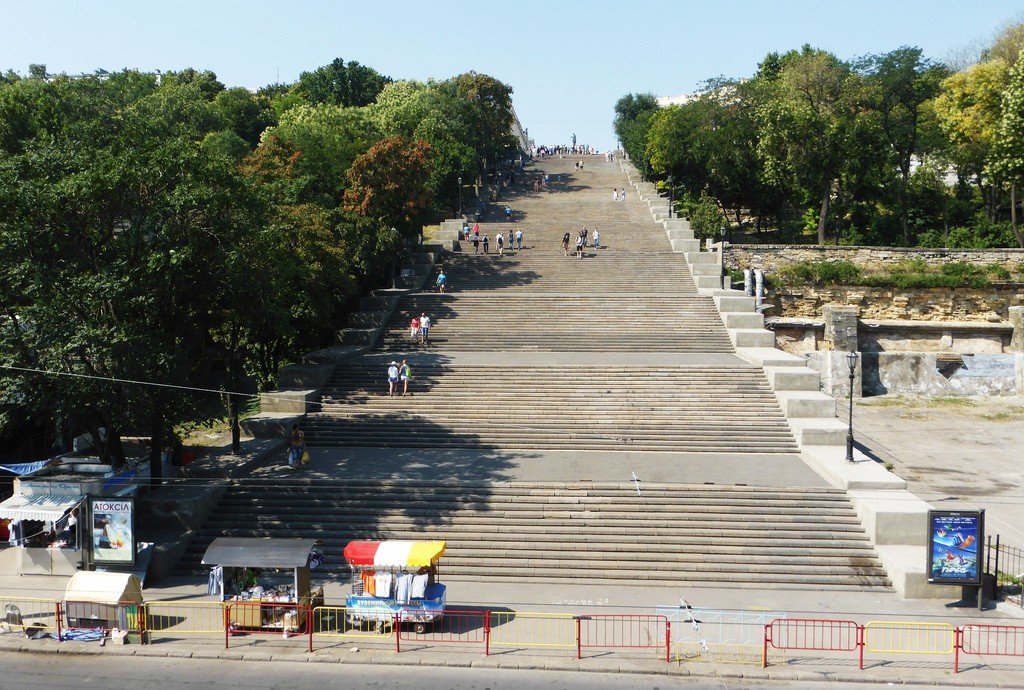

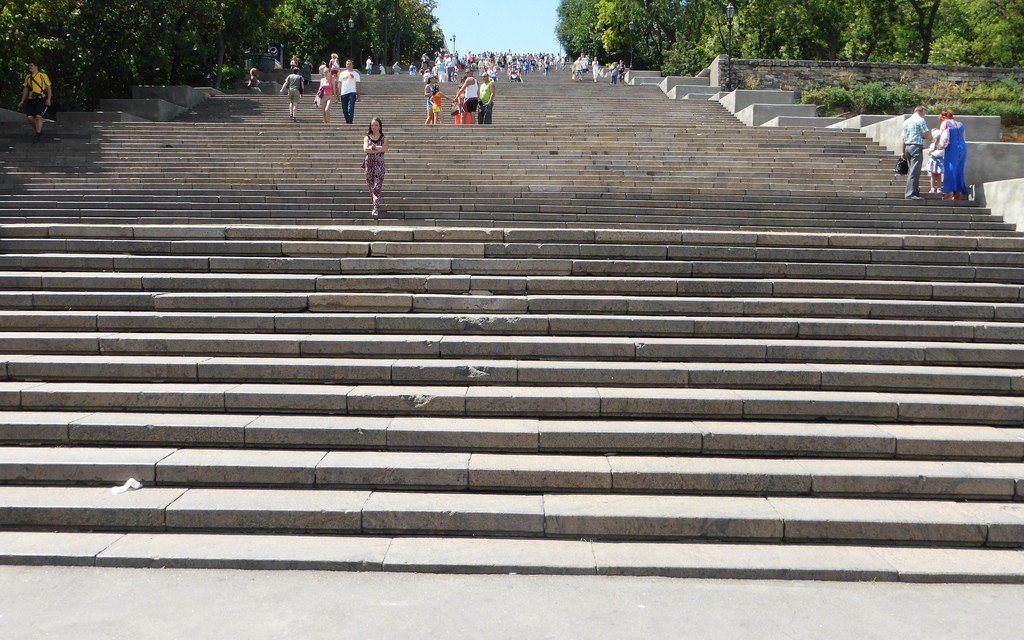
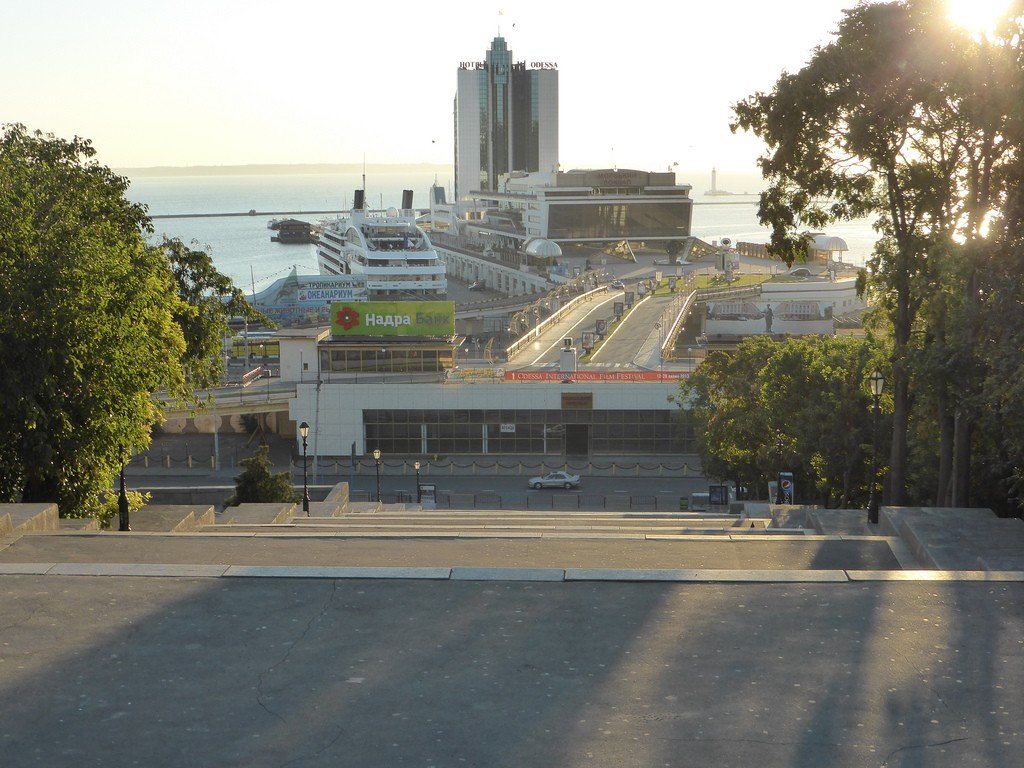
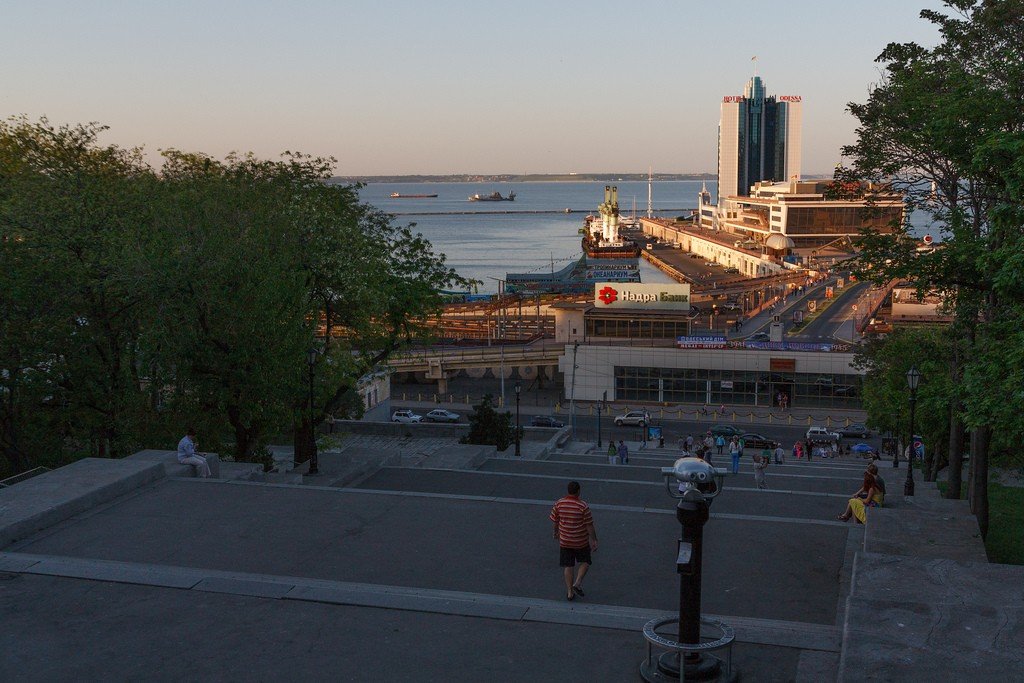
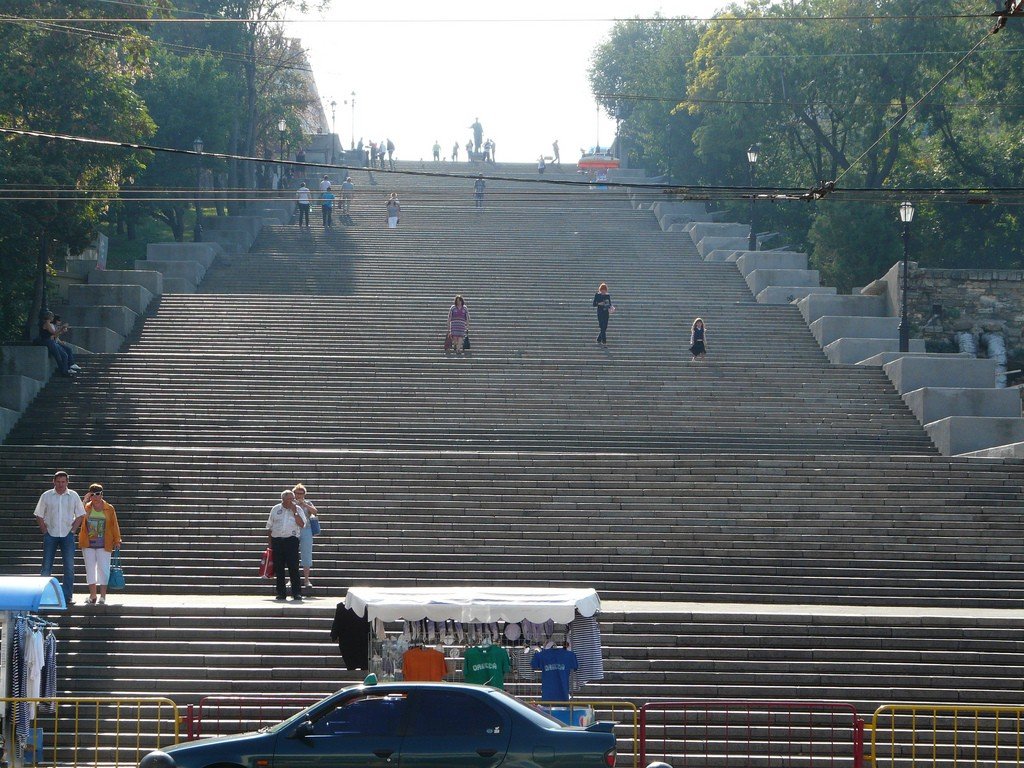
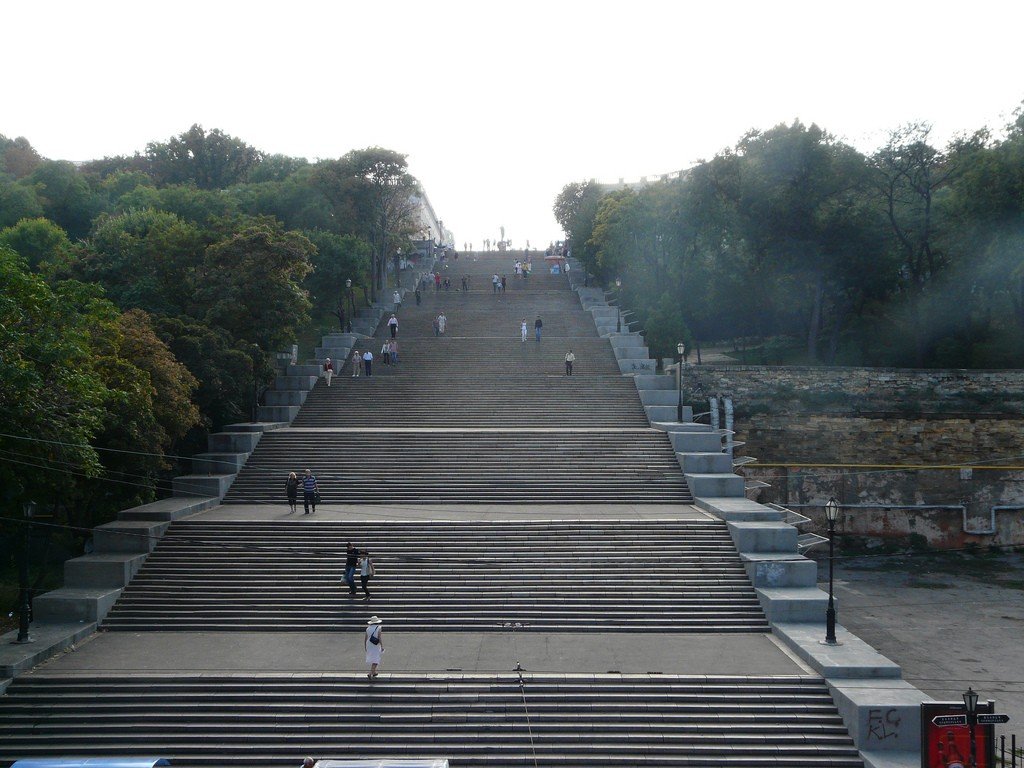
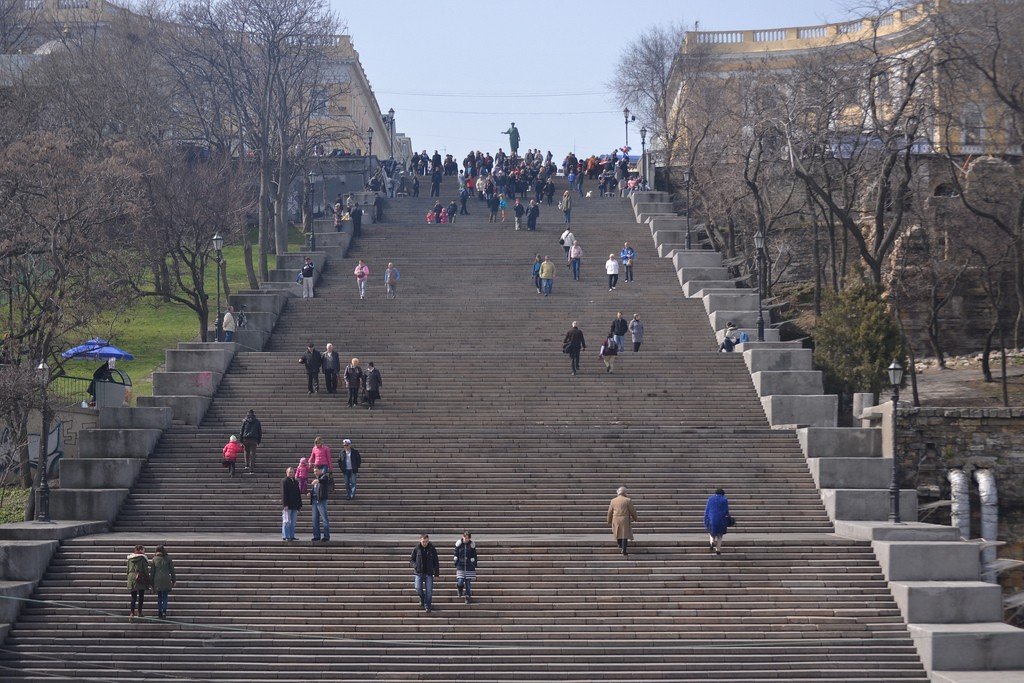
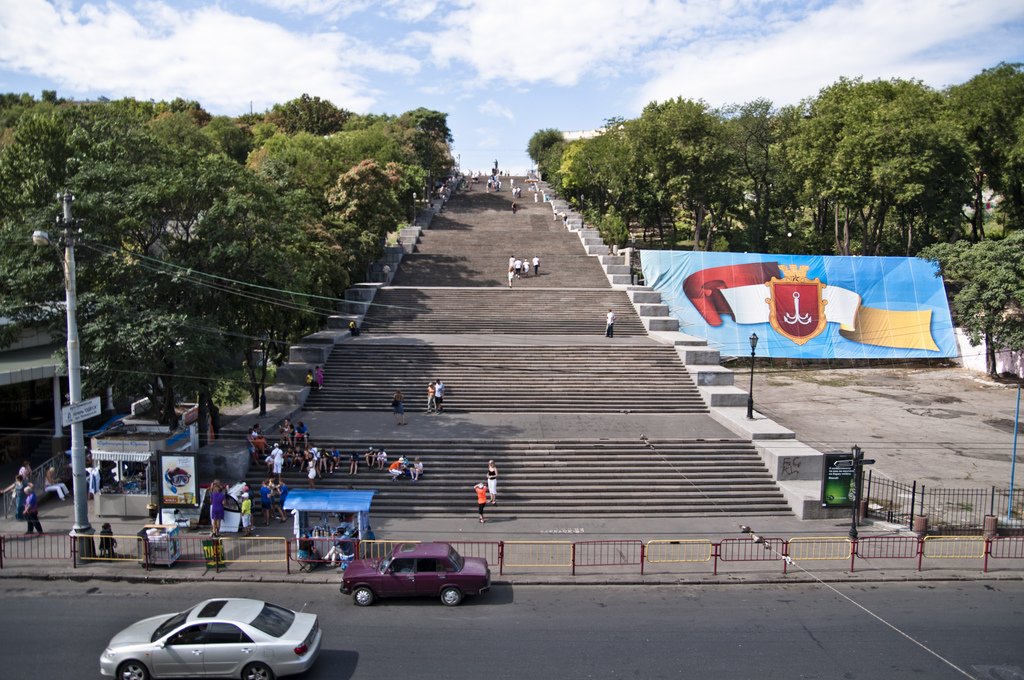
Video: Potemkin Stairs
Contents- Highlights
- History of the Potemkin Stairs
- Architectural features
- Interesting to know
- How to get there
Highlights
Potemkin Stairs was conceived as the main entrance from the Black Sea side. Its grandeur and a walk on the steps were inspired by the world’s writers: Alexander Green, Mark Twain and Jules Verne. In their memoirs the staircase is described as famous, magnificent, monumental… Descent from Primorsky Boulevard to Primorskaya Street on two hundred steps will remain in the memory of tourists for a long time, and the surrounding nature and salty sea air will make the walk more pleasant. At any time of the year you can get beautiful pictures here.
.One of the most famous staircases in the world is of great value and is located in a picturesque area of the city between the Greek Square and Istanbul Park and attracts tourists who do not like to return from vacation without a lot of bright pictures.
.History of the Potemkin Stairs
From the day of its foundation, Odessa needed unimpeded access to the Black Sea. At that time, the city was located on an elevated hill close to the coastline, ending in a steep descent that was fenced off with railings for the safety of passersby. The famous Russian poet A. S. Pushkin used to walk along the path to the sea, risking at any moment to roll down. He did not manage to wait for the appearance of wooden stairs, which greatly facilitated the walk to the sea: they appeared some time after the departure of the poet from Odessa. Now everyone could go down to the coast to walk in the morning fog and admire the serene smoothness of the sea water.
.
Erection of the stairs began on the initiative of Count M. S. Vorontsov. According to one of the versions, this descent was intended as a gift to Countess Elizabeth, who loved daily promenades and the rolling sound of waves. Other theories touch on the “ennobling” of the city before the visit of Emperor Nicholas I and the activities of the Freemasons.
.The Potemkin Staircase was an architectural project of 1835 designed by Franz Boffo, Charles (Charles) Pothier and Avraham Melnikov. The construction of the city’s calling card was completed by 1841 thanks to the coordinated work of engineers Morozov and Upton. Classicism, characteristic of that era, was reflected in the rhythmic cascade of the Potemkin Staircase.
.Funds for the construction of the main descent to the Black Sea were allocated from the treasury, which was replenished through economic activity, customs duties and deductions. The construction of the Potemkin staircase cost 200 thousand rubles – a record amount for those times. The appearance of the grandiose stepped descent became an international event, which was repeatedly mentioned in articles of English and American periodicals.
.
The beginning of the 20th century was marked by the opening of a funicular running along the stairs. In the 1970s it was replaced by an escalator, which ceased to function 20 years later. By the 211th anniversary of Odessa’s foundation, the city authorities pleased local residents with the decision to build a new funicular. Since 2005, two carriages with a total capacity of 24 people have been moving along the Potemkin Stairs. The entire journey takes just over a minute.
.Architectural features
The Potemkin Staircase is an Odessa landmark that is considered unique in every way. Being the largest in Ukraine, it reaches 142 meters in length and 27 meters in height. The Potemkin Staircase consists of 192 steps and ten flights, where you can catch your breath after a tiring ascent or descent. Originally it had two hundred steps, but “lost” eight of them during the expansion of the Odessa port. Filled with soil, they are still resting under the asphalt, on which now and then run modern cars.
.
The main staircase of the city is built on the principle of artificial perspective. Looking at the landmark from its upper platform, the tourist sees the steps of the same width, but it is worth going down and looking at the Odessa cascade, as immediately you can see the difference. Potemkin staircase narrows and, rushing upwards, creates a feeling of infinity. At the same time, the flights remain invisible. This visual effect is achieved due to the fact that the lower steps are wider than the upper ones by 9 meters.
.
Initially, the Potemkin Staircase was faced with Trieste sandstone of gray-green color. Reconstruction in 1933 was due to the need to replace it with more practical materials: gray-pink granite was intended for the steps, asphalt – for the spans. The piles and stone arches on the pylons act as supports. Anchor ties give additional stability to the cascade. Despite the instability of the coastal soils, Odessa’s landmark is still in excellent condition, although it is occasionally subjected to reconstruction.
.Interesting to know
The Potemkin Staircase is known not only for its unique design, but also for fascinating facts.
- In the list of the most beautiful staircases in Europe, the Odessa cascade takes the sixth place. In 2015, the staircase was honored with the status of “Treasure of European Film Culture.” During the construction of the Potemkin Stairs, locals joked that Count Vorontsov’s initiative would be useful only for the bronze Duke (a monument to the Duc de Richelieu), who would suddenly come to life and decide to walk to the Black Sea without harming himself..
- Potemkin Stairs – “participant” of many urban legends. Some say that here is hidden a secret underground passage, through which you can go to the Vorontsov Palace. Others mention the arches, under which at a depth of a couple of meters buried treasures smugglers Odessa. According to a third legend, one of the two hundred steps hides from prying eyes the looted fortune of Mishka Yaponchik – the famous raider. .
- Every year, the Potemkin Stairs become the venue for a race to its top. In addition, the daredevils arrange their own competitions, during which they descend the stairs on all types of transportation. The first to do this was the legendary athlete S. I. Utochkin.
In the old days the staircase became a tribune for open-air concerts, but now the city authorities increasingly prohibit this, as they consider its condition unsatisfactory, and the structure itself – unreliable.
.How to get there
The Potemkin Stairs can be reached:
.- by buses #10, 155 to the stop “Seaport”;
- by route cabs № 110, 120, 190, 210 to the stop “Seaport”.
If a trip on public transportation does not suit you, use the services of a city cab and get to Primorsky Boulevard (at the top of the Potemkin Stairs) or Primorskaya Street (at the bottom). If the bronze Duke catches your eye, be sure to turn right up to it to see Odessa’s majestic stepped cascade.
.